Note: I'm trying out a new layout with this post, with all photos + captions up front and the detailed trip description later on. Let me know what you think!
Background & travel logistics
I invited Sander, a friend from Delft, to join on the 4-day trip, which involved more than just kayaking. We flew into Basel (~140€ EasyJet, including 1 checked bag) and took a 2 hour train to Interlake (Supersaver tickets, ~$30 each way). We stayed at Camping Talacker (~$20/night), in a village called Riggenburg on the north shore of Lake Brienz. The campground was lovely, with quiet views of the lake, nice bathroom/shower facilities, but without an overly touristy feeling. Bus 102 from the train stations in Interlaken dropped us off very close to the campground.
The kayaking part
Iseltwald is the main town on the southeast shore of Lake Brienz (population ~400). Most of this shore is undeveloped and characterized by steep cliffs and forested hillsides. The town of Iseltwald is a quintessential photogenic Swiss town (see photos above). From there, I continued on to a small island (the only island in the lake), which is called Schnäggeninseli ("Snail Island"). I paddled around the island, which was blocked off by a fence. An unfriendly-looking German sign on the fence blocking the boat launch kept me from exploring any further. Further along, I arrived at the Giessbach ferry terminal. A steep cable car transports passengers up to the Grand Hotel Giessbach (see photos). Nearby, the Giessbach Falls (12 of them) tumble down the steep mountainside into the lake. I paddled up near the waterfall, much to the amusement of tourists on the bridge above.
Around 2pm I reached the east end of the lake. I paused to watch a dredging operation at the mouth of the Aare River, where a machine was scooping up massive loads of gravel from the bottom of the river and placing them on a barge (see photo). Nearby, a plant seemed to be processing the gravel (I'm assuming they were related). My non-existent German skills are preventing me from Googling for more information.
I stopped for lunch at a typical red tourist bench next to a cow pasture. The cows watched me curiously as I landed my kayak and ate a PB&J sandwich. After this short stop, I continued past the city of Brienz. Seawalls/revetments and other hard structures line much of the developed shores along the north side of the lake. Most creeks have been straightened through concrete channels. I stopped to look more closely at the mouth of Glyssibach (bach = brook), a steep mountain drainage that flows through Brienz. Huge shallow gravely deltas sprawl from the mouths of these creeks, whereas most of the lake is very steep/deep around the edges (~856 ft deep at the deepest point!). It looks like quite a bit of maintenance is necessary to clear the channels of gravel deposits after major storms (see excavator in photo above). While concrete channels like the examples above reduce flooding, they also remove much of the natural variability in creeks/rivers that is necessary for a healthy ecosystem... I won't get into that now, though :)
The paddle back to Interlaken was uneventful, with many cute lakeside towns, cows in the woods, and ferry terminals. Near the Riggenburg ferry terminal I had to maneuver a bit to avoid two passing ferries. I crossed the highly turbid and turbulent mouth of the Lütschine River. The Lütschine and Aare Rivers merge in Lake Brienz and flow through Interlaken to neighboring Lake Thun. A few minutes later, I was back at the launch site, happy, tired, and filled with that post-kayaking LIFE-IS-THE-BEST feeling that I had been craving. :) Happy Paddling!
A bit of water nerding...
2005 - Floods in Interlaken
In August 2005, massive flooding struck Switzerland, especially Bern, Interlaken, and Lucerne. This link shows photos of the flooding (#10, 11, and 14 are in places around Lake Brienz). While similar storms happen every year, the duration, wide spatial extent, and intensity of the storm made it the largest in over 100 years. In many locations 8 inches of rain fell in 48 hours. Runoff led to massive erosion, landslides, dike failures, log jams, and of course extensive flooding. Many of the flood channels that I observed around Lake Brienz were constructed after the 2005 storms. Detention basins are often included in these channels and store large volumes of water and encourage debris/rocks to settle out before flowing through town. Glyssibach was one example of this (see photo above and at this link).
1996 - Major turbidite deposition
In 1996 a major sediment slide even occurred under water in Lake Brienz (Girardclos et al 2007). Three observations led to this discovery: (1) a spike in turbidity and a drop in dissolved oxygen measurements, (2) a small tsunami wave (0.5 m) that caused two dredging cables to snap on an otherwise sunny and wave-less day, and (3) a human corpse, without head, lower legs and right arm, and partly covered by a blue vivianite coating, floated up to the surface and was found near shore. The body was carbon dated and estimated to have drowned between 1719–1818.
Ok, do I have your attention now? What the heck is turbidite? I decided to investigate. Turbidite is a layer of sediment that was deposited at the bottom of the ocean (or lake, in this case) in a turbid flow. In a turbid flow the water is chock full of suspended sediment. This results in overall "denser" water that has the capacity to pick up and move larger sediment than would otherwise happen. All this sediment moving around results in more turbid water. The large and sudden movement caused the water surface to drop in one location, creating a tsunami-like wave (tsunamis are often caused by underwater landslides). The loosening of sediments released the ancient corpse. Surprise!
Distance: 20 miles (32 km) kayaking
Duration: 5.5 hrs + 0.5 hr lunch break (wow! I think this was also one of my fastest trips)
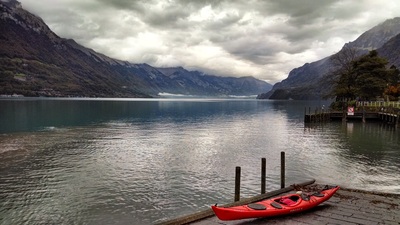
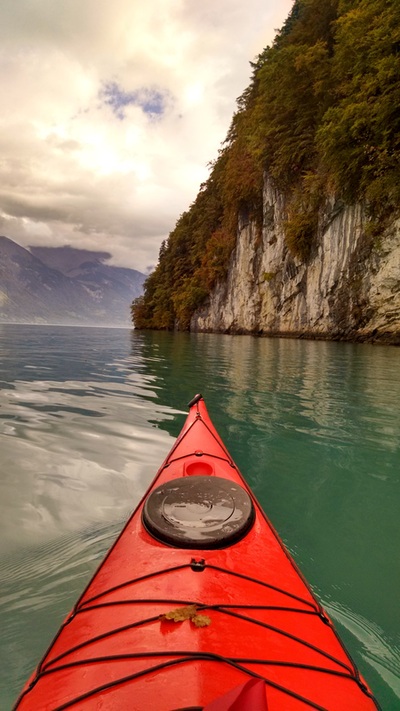
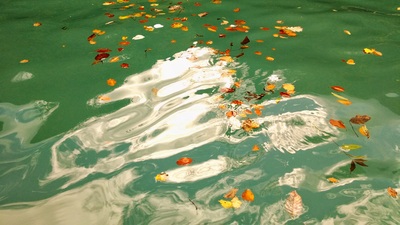
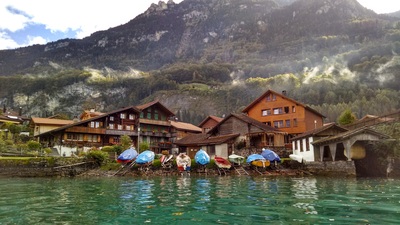
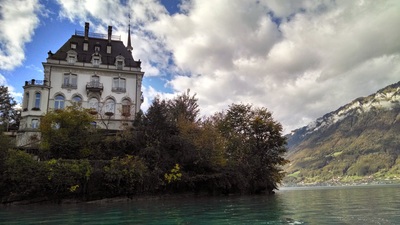
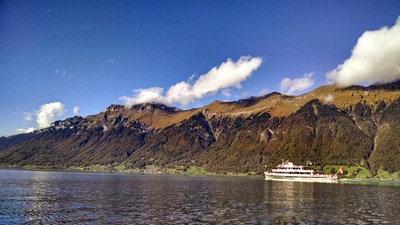
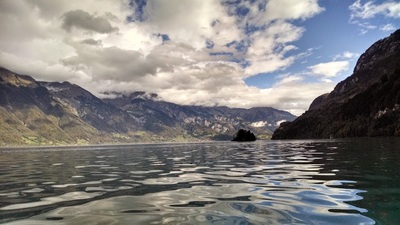
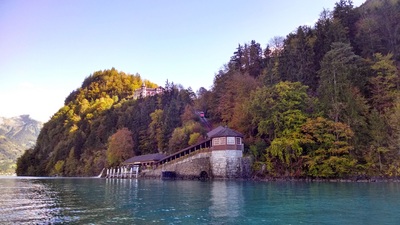
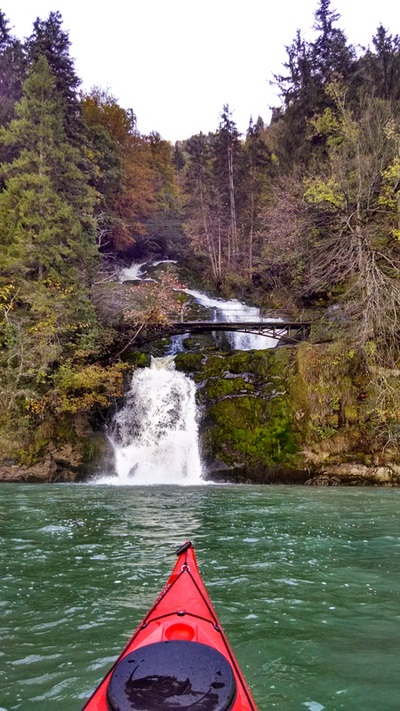
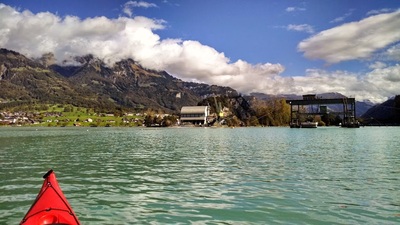
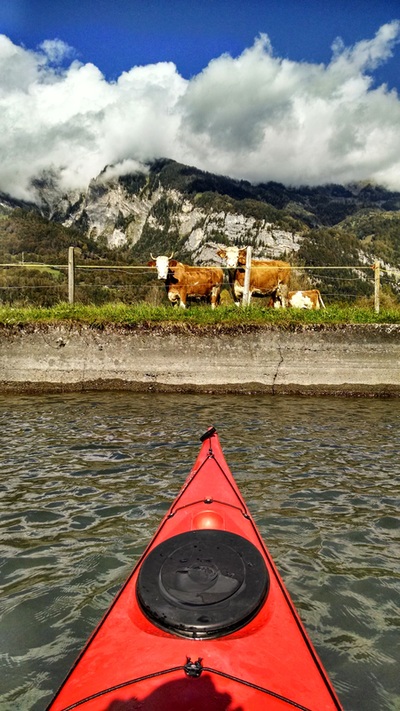
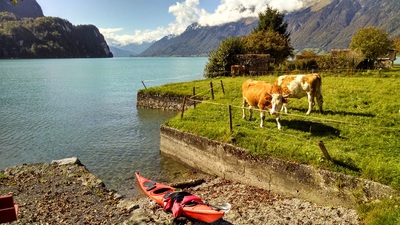
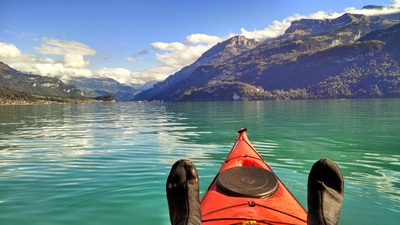
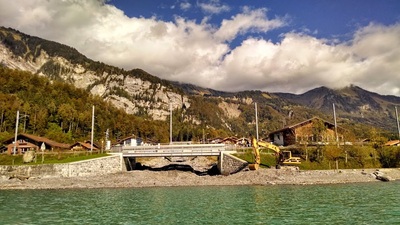
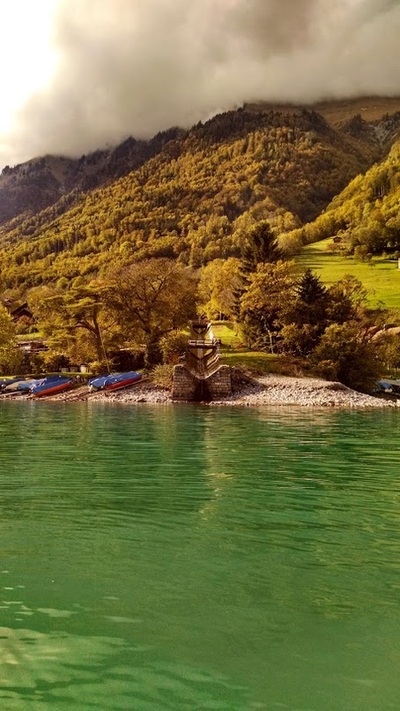
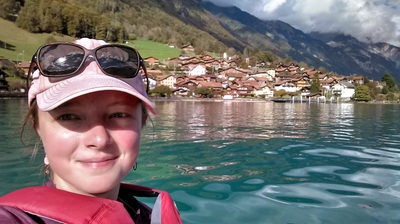
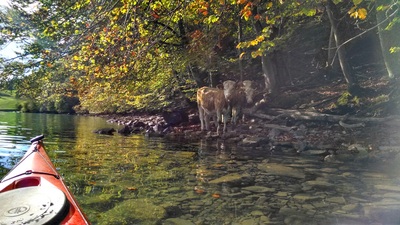

 RSS Feed
RSS Feed

